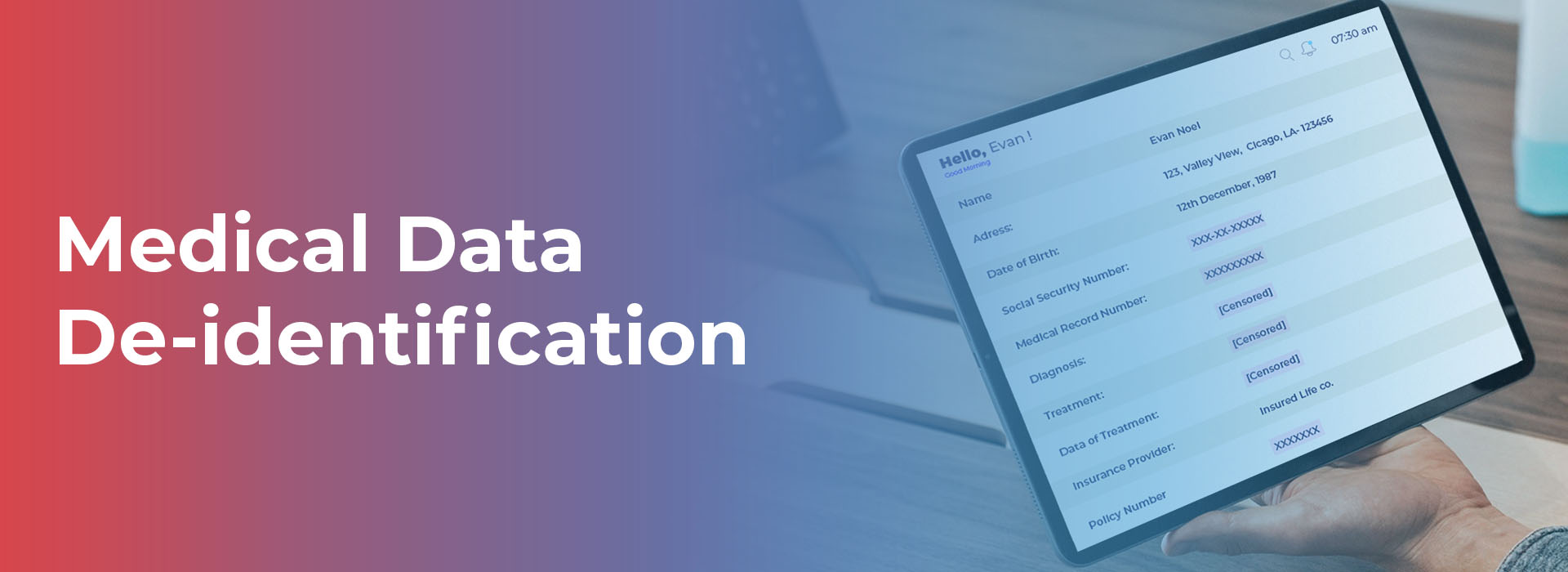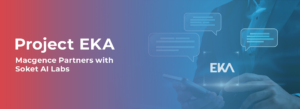How Does Medical Data De-identification Ensure Patient Privacy?
Several healthcare organizations are shifting their operations to digital platforms these days. With this shift, the efficiency of all the medical processes has increased. One must note that healthcare-related data carries sensitive information. It includes personally identifiable information(PII) and protected health information (PHI). Using such data on digital platforms raises concerns about the security of this sensitive data. Medical data de-identification comes to the rescue here. It ensures the safeguarding of the data of patients without inhibiting the data analysis and research process.
In this blog, let’s dive deeper into medical data de-identification. Keep reading & keep learning!
What is Medical Data De-Identification?
This technique is used to change or remove patients’ personal information from a medical record that was used to provide a diagnosis or treatment to an individual. Moreover, the main aim of data de-identification is to maintain the patient’s privacy. After de-identification, datasets can be used for research purposes as well.
Hospitals generally follow the practice of medical data de-identification before using or providing a particular dataset for research purposes. Medical data de-identification ensures patient privacy and provides crucial insights for future use at the same time. If you are looking to source quality datasets to train your AI model then Macgence is your go-to option. For more information, log on to www.macgence.com.
Why Data De-Identification is Used in the Medical Field?
Medical records include a lot of sensitive information about the patients. This information includes details like their name, address, previous medical records, financial information related to healthcare, insurance status, and more. Such information is quite sensitive and must not be shared.
However, for research purposes, data is required. So, medical data de-identification removes the PHI from the datasets and makes it apt for research purposes. Such collection of healthcare data can help boost the clinical research process and will also add immense value to the medical community.
Methods of Data De-Identification
In a medical dataset, there are two types of identifiers: direct and indirect. Before getting the process started, one must be clear about which type of identifier needs to be hidden or removed.
- Direct Identifiers: These include names, phone numbers, emails, and more which can directly point out to an individual.
- Indirect Identifiers: These include demographic and economic data. Such information does not directly identify a person. Indirect identifiers are quite valuable for medical research and analysis.
Below mentioned are some of the most common data de-identification methods:
- Differential Privacy: In this method, data patterns are analyzed without exposing any personal information of the patients.
- Pseudonymization: This method involves the replacement of unique identifiers with some generalized temporary codes/IDs.
- Omission: As the name suggests, this method simply removes the direct identifiers like name, phone number, and more from a dataset.
- Redaction: It is used to mask or erase multiple kinds of identifiers from records including text, images, and audio using pixelation.
- Generalization: In this medical de-identification method, precise data is replaced with broader categories. For example, exact cities and pin codes are changed to just the state or country name.
- Swapping: In this process, data points are swapped between individuals, such as salaries, to maintain the integrity of the overall data.
- Micro-aggregation: In this medical de-identification process, similar numerical values are grouped and replaced with the average of the group.
There are many other medical de-identification methods out there but these are the most used ones. These methods help in maintaining the anonymity of people’s personal information while providing data suitable for research purposes at the same time.
Benefits of Medical Data De-Identification
- Data Privacy: As all patients’ personal information is removed from the datasets, their privacy is protected. After medical data de-identification, datasets can even be used for research purposes.
- Promotes Data Sharing: De-identified data can be shared among organizations. This allows different healthcare bodies to collaborate which in turn is crucial for the development of better healthcare solutions.
- Enables to Raise Public Health Alerts: Using de-identified data, researchers can spot patterns and issue public health alerts based on them.
- Helps in Improvising Healthcare: De-identified data enables researchers to get deeper medical insights; consequently, this leads to better and research-backed medical treatment.
Why Macgence?
So, that was all about the medical data de-identification and how it is playing a crucial role in the evolution of medical research. If you want to anonymize, structure, or unstructure your medical data then check out Macgence. We provide the best AI training datasets in the entire market.
With Macgence, you get outstanding quality, scalability, expertise, and support. Whether you are an individual medical researcher or you own a medical facility, Macgence has always got your back.
We are committed to adhering to all the ethics so that we can deliver quality results to our clients. Macgence is even conformed to ISO-27001, SOC II, GDPR, and HIPAA regulations. Reach out to us today at www.macgence.com!
FAQs
Ans: – It is the process of removing the personal data of patients from a medical record. Consequently, medical data de-identification is done to make datasets research-friendly.
Ans: – Medical data de-identification is important as it makes datasets available for researchers. Also, it restricts the mapping of individuals from medical datasets.
Ans: – Direct identifiers include information that can directly point out to an individual for example names, phone numbers, emails, and more. Indirect identifiers on the other hand include demographic and economic data. Such information does not directly identify a person.
Ans: – In pseudo-dynamization, unique identifiers are replaced with some generalized values.
Ans: – Yes, the HIPAA privacy rule needs to be followed for medical data de-identification; additionally, the act regulates how medical records and other personally identifiable health information are protected at the national level.
You Might Like
February 28, 2025
Project EKA – Driving the Future of AI in India
Spread the loveArtificial Intelligence (AI) has long been heralded as the driving force behind global technological revolutions. But what happens when AI isn’t tailored to the needs of its diverse users? Project EKA is answering that question in India. This groundbreaking initiative aims to redefine the AI landscape, bridging the gap between India’s cultural, linguistic, […]
March 7, 2025
What is Data Annotation? And How Can It Help Build Better AI?
Spread the loveIntroduction In the world of digitalised artificial intelligence (AI) and machine learning (ML), data is the core base of innovation. However, raw data alone is not sufficient to train accurate AI models. That’s why data annotation comes forward to resolve this. It is a fundamental process that helps machines to understand and interpret […]
March 6, 2025
Vertical AI Agents: Redefining Business Efficiency and Innovation
Spread the loveThe pace of industry activity is being altered by the evolution of AI technology. Its most recent advancement represents yet another level in Vertical AI systems. This is a cross discipline form of AI strategy that aims to improve automation in decision making and task optimization by heuristically solving all encompassing problems within […]
March 5, 2025
Use of Insurance Data Annotation Services for AI/ML Models
Spread the loveThe integration of artificial intelligence (AI) and machine learning (ML) is rapidly transforming the insurance industry. In order to build reliable AI/ML models, however, thorough data annotation is necessary. Insurance data annotation is a key step in enabling automated systems to read complex insurance documents, identify fraud, and optimize claim processing. If you […]


 Previous Blog
Previous Blog







